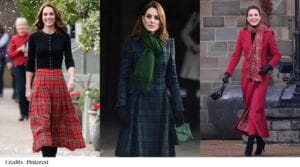Fashion is cyclical, and among the classic pieces that never go out of style, fur remains a strong contender. It’s a true symbol of elegance!
Fur garments are staples in any wardrobe—an investment that not only keeps you warm but also makes a timeless fashion statement. From long coats and jackets to capes and gloves, the options are endless.
Each type of fur has its own history and personality. Let’s explore the most commonly used types of fur in fashion.
Most Commonly Used Furs in the Trade
The first thing to consider when purchasing fur items is the type of fur you want. A wide variety of furs are available on the market, each with its own characteristics, durability, and price. Be sure to choose a fur that suits your needs and lifestyle.
- Mink Fur: Mink coats are iconic in the fashion world. Their flat, short fur shines with an almost wet glow, and many consider them water-repellent. Though lightweight, mink is surprisingly warm, making it an ideal choice for winter. Dark mink is the most common and recognizable, and if there’s one fur piece every woman should have in her wardrobe, it would be a mink coat.
- Fox Fur: In past decades, fox coats were often made with the head and feet intact. Today, fox fur is used to create stunning coats and to design clothing with unique details. Fox is known for its soft fur, longer length compared to other furs, and a diverse range of colors.
- Rabbit Fur: A rabbit fur coat is a more affordable option since rabbits are more abundant. While it may not offer the same glamour as other furs, its softness, long pile, density, and variety of colors make it appealing. It’s a popular choice for affordable fashion pieces, adding a distinctive touch to any outfit.
- Astrakhan Fur: Astrakhan luxury fur coat is highly sought after, often associated with those who have exquisite and elegant tastes. Astrakhan fur is soft and curly, with a short pile, usually in deep black. These coats are not only stylish but are also prized for their exceptional warmth. Today, Astrakhan coats are experiencing a renaissance, with old garments being recycled into modern and fashionable designs.
What to Look for When Purchasing Fur Garments
- Origin and Sustainability: The provenance of the fur is crucial. Ensure the fur you’re purchasing comes from ethical and sustainable sources. Avoid products linked to illegal hunting or inhumane animal farming. Look for fur that comes from ethically raised animals or sustainable sources that meet environmental and animal welfare standards.
- Construction Quality: Quality construction is key to ensuring your fur investment lasts. Check the stitching, lining, zippers, and overall details of the garment or accessory. Stitching should be strong and even, zippers should work smoothly, and the lining should be of high quality to ensure comfort and durability.
- Care and Maintenance: Fur requires special care to maintain its beauty and longevity. Before purchasing, make sure you understand the care requirements. Some furs need dry cleaning, while others can be hand-washed. Proper storage is also essential to prevent damage. In our latest article, we explain how to store your fur items correctly!




